How to Conquer Your Software Testing Lifecycle
The software development lifecycle (SDLC) is a universally understood approach for guiding and structuring the creation and implementation of software.
The software testing lifecycle (STLC) serves the same purpose as its more well-known relative, but with a laser focus on the different activities performed during the software testing process.
Although the STLC can be viewed as part of the SDLC, it has distinct elements, activities, inputs, and outputs that teams can use to elevate their software testing efforts.
So if this is your first time even seeing the STLC acronym—or even if your team is already a well-oiled quality assurance (QA) machine looking to level up—this article aims to answer the question: “What is the software testing lifecycle?"
Why You Need to Understand the Software Testing Lifecycle
From providing continuity from project to project to ensuring that no stone is left unturned during your QA process, the STLC plays several important supporting roles during software development. In practice, the STLC kicks off as soon as your project’s requirements have been fully collected and confirmed by project stakeholders.
Some other roles include helping your team:
- Set clear testing goals.
- Meet quality and functionality standards.
- Approach software testing consistently and thoroughly.
- Perform efficient, structured testing, especially for agile development efforts.
The Main Phases of the STLC
As you can expect of any industry methodology, the STLC has its own defined structure, with the encompassing phases including their own steps, entry and exit criteria, inputs, and outputs for teams to follow.
The STLC consists of six phases that build on one another:
1. Requirement AnalysisIn the first step, the QA team collects the requirements, meets with the project stakeholders, and ensures they understand what needs to be tested.
2. Test PlanningDuring this phase, the testing team creates the overall test plans and estimates the resources, time, and other costs associated with the upcoming software testing.
3. Test Case DesignWith the test plans in place, the QA team creates detailed test cases and prepares any test data needed when executing the tests.
4. Test Environment SetupThis phase is one of the most complicated and critical to the software testing process because the test environment should replicate the code and conditions that end users will experience. This phase can begin alongside “Test Case Design” and is usually completed by a separate development team or even the customer.
5. Test ExecutionWith everything in place, this is where the rubber hits the road and test cases are executed. Depending on the results, the phases can cycle through until all cases are satisfied.
6. Test ClosureAfter tests are completed, “Test Closure” includes documenting lessons learned, accepted risks, and other feedback.
Best Practices for an Effective Software Testing Lifecycle
Are you sold on leveraging the STLC to structure your QA program? Then use these best practices to jumpstart your work:
- Use a consistent method to write and prepare test cases and streamline the “Test Case Design” phase.
- Leverage a test management platform to store test cases, sequence test runs, ease tester coordination and collaboration, and monitor performance against STLC.
- Utilize a test management platform that can filter results and test data and generate custom reports to boost stakeholder and tester engagement.
- Engage a wide range of end users and testers to create robust test cases.
Take It to the Next Level with TestMonitor
No matter the maturity of your team’s software testing approach or the complexity of your software, TestMonitor offers the flexibility, features, and usability your QA team needs to boost the effectiveness of your quality assurance program.
Want to learn more about how much value TestMonitor can deliver for your business? Then use our quick ROI calculator to see results tailored to your project details.

Written by René Ceelen
René Ceelen, Director of TestMonitor, brings over 28 years of expertise in IT quality assurance and test management. With a passion for simplifying software testing, he has redefined the field by combining deep knowledge with an intuitive platform that streamlines processes and enhances user acceptance. René's work, rooted in his academic research at Radboud University, emphasizes clarity, structure, and end-user involvement, helping businesses align IT systems with operational needs to deliver reliable, high-quality solutions.





